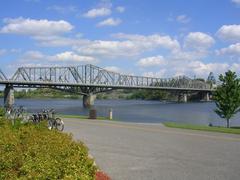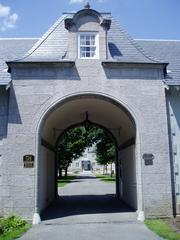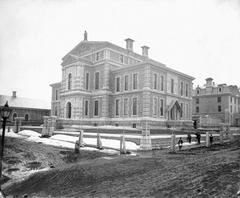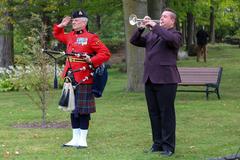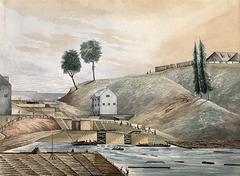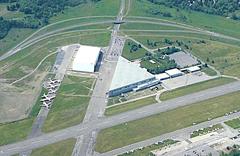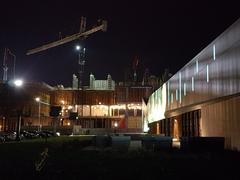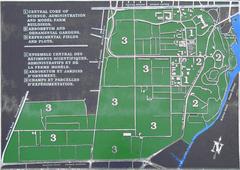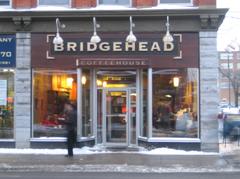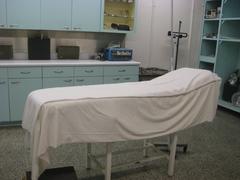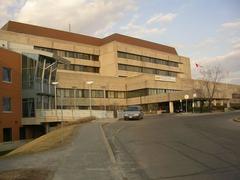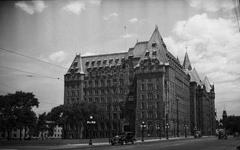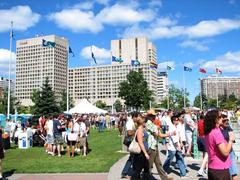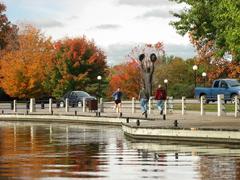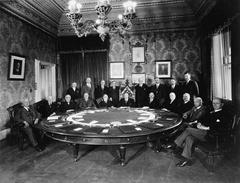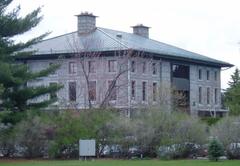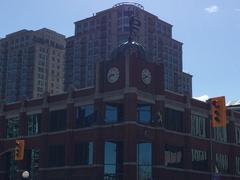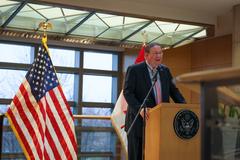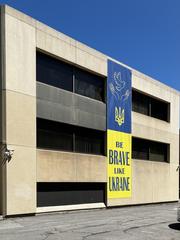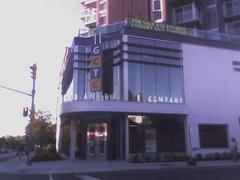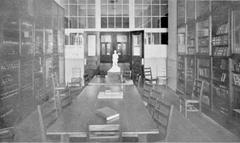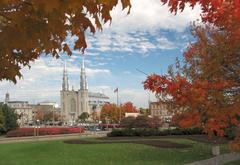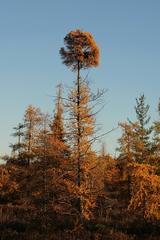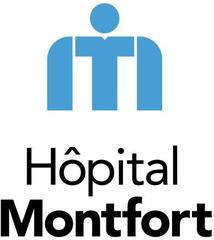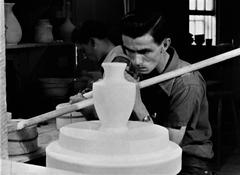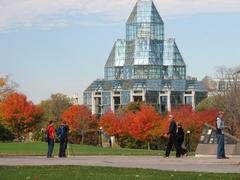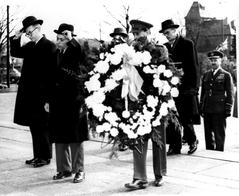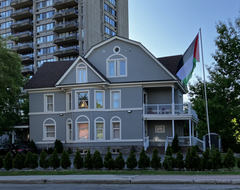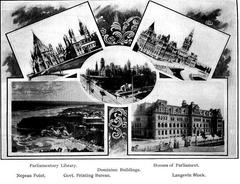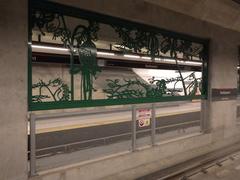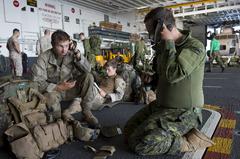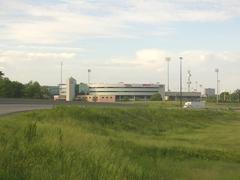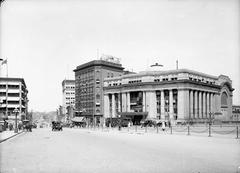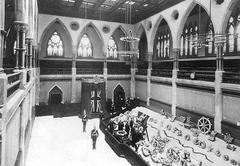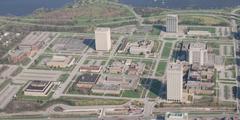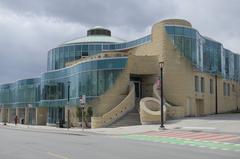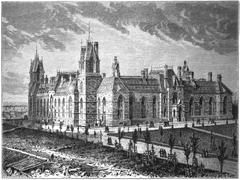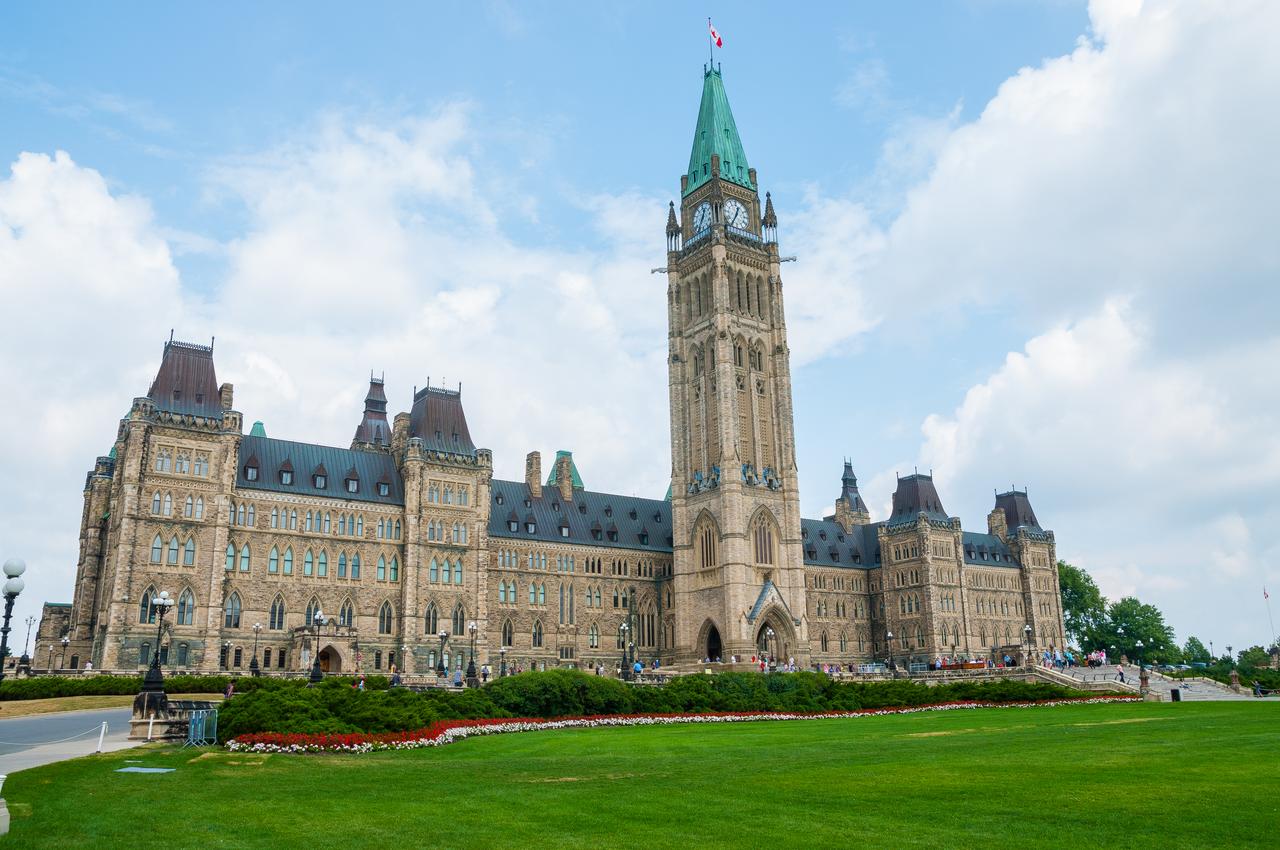
Comprehensive Guide to Visiting Ottawa, Ontario, Canada
Date: 13/08/2024
Captivating Introduction
Welcome to Ottawa, the vibrant heart of Canada where history, culture, and adventure blend seamlessly into an unforgettable experience. Imagine strolling along cobblestone streets, discovering hidden cafes, and marveling at stunning Gothic Revival architecture. Ottawa isn’t just the political epicenter of Canada; it’s a treasure trove of stories and experiences waiting to be uncovered. From its ancient roots as the homeland of the Algonquin Anishinaabe people to its transformation into a modern capital, Ottawa captures the essence of Canadian heritage and innovation.
Did you know that Ottawa’s historical tapestry includes the bustling fur trade routes of the 17th century and the strategic military projects of the 19th century? As you paddle along the Rideau Canal or visit the iconic Parliament Hill, you’re stepping into a narrative shaped by explorers, Indigenous communities, and statesmen. This city, nestled between the provinces of Ontario and Quebec, embodies the linguistic and cultural diversity of Canada (Wikipedia).
But there’s more to Ottawa than its storied past; it’s a city that knows how to celebrate life. Whether you’re skating on the world’s largest naturally frozen rink during Winterlude or savoring a BeaverTail pastry at the lively ByWard Market, Ottawa promises a feast for the senses. Ready to dive in? Let’s explore Ottawa through the eyes of a local and uncover its hidden gems, quirky customs, and must-see attractions.
Table of Contents
History of Ottawa
Early Settlement and Indigenous Heritage
Did you know that Ottawa’s roots go back thousands of years, long before it became Canada’s capital? The Algonquin Anishinaabe people called this area home and named the Ottawa River ‘Kichi Sibi,’ meaning ‘Great River.’ This river was their superhighway, connecting communities and fostering trade.
European Exploration and Fur Trade
Picture this: It’s 1613, and French explorer Samuel de Champlain is paddling down the Ottawa River. His arrival marks the beginning of European exploration in the region. The river quickly becomes a bustling fur trade route, bringing together Indigenous peoples and European traders in a mix of camaraderie and conflict.
Founding of Bytown
Fast forward to the 1820s, when the construction of the Rideau Canal began. Led by Lieutenant Colonel John By, this massive project aimed to secure a supply route between Montreal and Kingston. The settlement that sprang up around the canal’s construction site was aptly named Bytown. Imagine the hustle and bustle as laborers, tradespeople, and entrepreneurs flocked to this burgeoning community.
Transition to Ottawa and Capital Designation
In 1855, Bytown got a makeover and a new name: Ottawa, derived from the Algonquin word ‘Odawa,’ meaning ‘to trade.’ Its strategic location made it the perfect choice for the capital of the Province of Canada. In 1857, Queen Victoria gave her seal of approval, and Ottawa officially became the capital, thanks to its safe distance from the American border and its position between Canada’s French-speaking and English-speaking regions.
Development of Parliament Hill
Parliament Hill, Canada’s political heart, started to take shape in the late 19th century. The original Centre Block, completed in 1866, tragically burned down in 1916. But like a phoenix rising from the ashes, the current Centre Block, with its iconic Peace Tower, was completed in 1927. This Gothic Revival masterpiece is not just a building; it’s a symbol of Canadian democracy. Don’t miss the breathtaking views from the Peace Tower on your visit!
20th Century Growth and Modernization
Ottawa’s transformation in the 20th century is nothing short of remarkable. From a modest lumber town, it grew into a modern capital. National institutions like the National Gallery of Canada and the Canadian Museum of History cemented its cultural significance. The city also embraced technological innovation, becoming a high-tech hub. Ottawa’s government and administrative roles attracted a diverse population, creating a vibrant cultural scene.
National Historic Sites
Ottawa is a treasure trove of National Historic Sites. The Rideau Canal, designated in 1925, is a must-see. Other gems include Laurier House, the former home of Prime Ministers Sir Wilfrid Laurier and William Lyon Mackenzie King, and the Bytown Museum, which offers a peek into the city’s early days. These sites provide a rich tapestry of Ottawa’s history and culture.
Winterlude Festival
If you visit Ottawa in February, you’re in for a treat! The Winterlude Festival is a winter wonderland event showcasing stunning ice sculptures, skating on the Rideau Canal Skateway, and the Snowflake Kingdom playground. Winterlude is a testament to Ottawa’s ability to turn cold weather into a vibrant cultural celebration. Plus, it’s a fantastic opportunity to connect with Indigenous culture through various activities and exhibits.
Cultural and Artistic Diversity
Ottawa’s cultural scene is as diverse as its population. The city hosts a plethora of festivals and events year-round, celebrating everything from music and film to food and heritage. The National Arts Centre is a premier venue for performing arts, offering a wide range of performances. The ByWard Market neighborhood is another cultural hotspot, brimming with eclectic shops, restaurants, and entertainment venues.
Visitor Tips
Ready for your Ottawa adventure? Here are some must-see attractions and activities:
- Parliament Hill: Take a guided tour and enjoy the Changing of the Guard ceremony. Don’t miss the Sound and Light show that projects a captivating story onto the Parliament Buildings.
- Rideau Canal: Experience the canal in all seasons, from winter skating on the world’s largest naturally frozen rink to summer kayaking or cycling along its scenic pathways.
- National Museums: Dive into Canada’s history and culture at the Canadian Museum of History, the Canadian War Museum, and the National Gallery of Canada.
- ByWard Market: Wander through one of Canada’s oldest and largest farmers’ markets, sample local treats like BeaverTails, and shop for unique souvenirs.
- Ottawa River: Enjoy breathtaking views and outdoor activities like whitewater rafting, paddleboarding, and sightseeing cruises along the Ottawa River.
Significance of Ottawa, Ontario, Canada
Historical Significance
Ottawa, the capital city of Canada, has a rich and multifaceted history that has significantly shaped its current status. Originally founded as Bytown in 1826, the city was named Ottawa in 1855, derived from the Algonquin word “adawe,” meaning “to trade” (Wikipedia). The city’s early growth was fueled by the construction of the Rideau Canal, a strategic military project intended to secure a supply route in case of American invasion (Britannica). The canal, now a UNESCO World Heritage Site, played a crucial role in the transportation of timber, goods, and people, contributing to Ottawa’s early economic development.
In 1857, Queen Victoria selected Ottawa as the capital of the Province of Canada, a decision influenced by its central location between Toronto and Montreal, its accessibility by rail, and its defensible position away from the U.S. border (World Atlas). This choice spurred rapid growth and development, transforming Ottawa from a modest lumber town into a bustling political hub. The construction of the Parliament Buildings began in 1859, and they were officially opened in 1866, just a year before Canada became a dominion within the British Commonwealth (The Canadian Encyclopedia).
Political Significance
As the political center of Canada, Ottawa houses the federal government’s key institutions, including the Parliament of Canada, the Supreme Court, and the Office of the Prime Minister (Wikipedia). The city is also home to numerous foreign embassies, making it a focal point for international diplomacy. Ottawa’s role as the capital has made it the site of many significant events in Canadian history, such as the first visit of King George VI and Queen Elizabeth to the Canadian Parliament in 1939, the celebration of VE Day in 1945, and the proclamation of the Constitution Act by Queen Elizabeth II in 1982 (Wikipedia).
Cultural Significance
Ottawa is a vibrant cultural hub, hosting numerous national museums, galleries, and cultural institutions. The National Gallery of Canada, the Canadian Museum of History, and the National Arts Centre are just a few examples of the city’s rich cultural offerings (Wikipedia). The city is also known for its festivals, such as the Canadian Tulip Festival, which has been held annually since 1953 and attracts hundreds of thousands of visitors from around the world (Ottawa Tourism).
Ottawa’s bilingual nature, with both English and French being widely spoken, reflects Canada’s broader cultural diversity. The city’s location on the border between Ontario and Quebec further emphasizes its role as a bridge between the country’s Anglophone and Francophone communities (World Atlas).
Economic Significance
Ottawa’s economy is diverse and robust, with significant contributions from the federal government, high-tech industries, and tourism. The city is often referred to as “Silicon Valley North” due to its concentration of technology companies, which began to flourish in the 1960s with the establishment of institutions like the National Research Council and the Defence Research Board (The Canadian Encyclopedia). Today, Ottawa is home to numerous tech firms, including Shopify, one of Canada’s most successful technology companies.
Tourism is another vital component of Ottawa’s economy. The city attracts over 11 million visitors annually, contributing more than $2.2 billion to the local economy (Wikipedia). Major attractions include the Parliament Buildings, the Rideau Canal, and various national museums and cultural festivals.
Educational Significance
Ottawa boasts a high proportion of university-educated residents and is home to several prestigious educational institutions. The University of Ottawa, Carleton University, and Algonquin College are among the city’s leading academic institutions, offering a wide range of programs and contributing to the city’s reputation as a center of research and innovation (Wikipedia).
Environmental Significance
Ottawa is renowned for its green spaces and commitment to environmental sustainability. The city is home to numerous parks, including Gatineau Park, a vast natural reserve that offers a range of outdoor activities such as hiking, skiing, and wildlife observation. The Rideau Canal, which becomes the world’s largest skating rink in winter, is another testament to the city’s integration of natural beauty into urban life (Britannica).
Social Significance
Ottawa’s social fabric is characterized by its diversity and inclusivity. The city hosts various cultural and community events that celebrate its multicultural population. For instance, Canada Day celebrations in Ottawa are a major event, attracting thousands of people to LeBreton Flats Park for activities, shows, and fireworks (CTV News). The city’s commitment to social causes is also evident in events like Run Ottawa’s Otto’s Canada Day Races, which raise funds for the Canadian Cancer Foundation (Ottawa Citizen).
Architectural Significance
Ottawa’s architectural landscape is a blend of historical and modern styles. The Parliament Buildings, designed in the Gothic Revival style, are among the most iconic structures in the city. Other notable buildings include the Château Laurier, a historic hotel that resembles a French château, and the modernist National Arts Centre (Journey Gourmet).
Technological Significance
Ottawa’s role as a technology hub cannot be overstated. The city has been at the forefront of technological innovation in Canada, earning the nickname “Silicon Valley North.” Companies like Shopify, Mitel, and QNX have their roots in Ottawa, contributing to its reputation as a center for high-tech industries (The Canadian Encyclopedia).
Conclusion
Ottawa’s significance as the capital of Canada is multifaceted, encompassing historical, political, cultural, economic, educational, environmental, social, architectural, and technological dimensions. Its rich history, diverse culture, and robust economy make it a city of national and international importance, offering a wealth of experiences for residents and visitors alike.
Discover Ottawa: A Local’s Guide to Canada’s Capital
Best Time to Visit
Picture this: blooming tulips as far as the eye can see, a gentle breeze carrying the scent of spring. The best time to visit Ottawa is between March and May, when the city comes alive with the famous Tulip Festival, showcasing over a million tulips. If you’re a winter enthusiast, bundle up and glide on the Rideau Canal, the world’s largest naturally frozen skating rink—an experience that’s as magical as it sounds!
Getting Around
Ottawa is a walker’s paradise, especially in the bustling downtown and ByWard Market areas. Imagine strolling through cobblestone streets, discovering quaint shops and hidden cafés. For those venturing into the suburbs, renting a car is your best bet. Pro tip: Discover Cars offers some sweet deals on rentals.
Accommodation
From cozy B&Bs to luxurious hotels, Ottawa has it all. Planning to visit during Canada Day or the Tulip Festival? Book early! You’ll find the perfect spot to rest after a day of exploring on Ottawa Tourism.
Health and Safety
Canada’s healthcare system is top-notch, but it’s exclusive to residents. Grab some travel insurance for peace of mind. Ottawa is generally safe, but it never hurts to stay alert, especially if you’re exploring solo.
Language
Bienvenue à Ottawa! While English will get you far, a sprinkle of French can make your experience even richer. Try saying “Bonjour” or “Merci” and watch the locals’ faces light up.
Drinking Water
Ottawa’s tap water is safe to drink, but if you’re staying in an older hotel, a filtered water bottle is a wise choice. Cheers to your health!
Currency and Payments
The Canadian Dollar (CAD) is king here. While cards are widely accepted, having some cash on hand for those charming little market stalls is a good idea.
Local Transportation
OC Transpo’s buses and light rail services make getting around a breeze. Want to venture further? Car rentals, taxis, and Uber are at your service.
Must-See Attractions
- Parliament Hill: Step into the heart of Canada’s federal government. Free guided tours offer a glimpse into the nation’s political pulse.
- ByWard Market: Dive into a historic market brimming with shops, restaurants, and nightlife.
- Rideau Canal: A UNESCO World Heritage Site perfect for summer boating and winter skating.
- National Museums: From the Canadian Museum of History to the National Gallery of Canada, there’s a treasure trove of knowledge waiting for you.
Festivals and Events
Ottawa knows how to throw a party! Celebrate Canada Day on Parliament Hill or groove to tunes at Ottawa Bluesfest. Winterlude transforms the city into a winter wonderland with ice sculptures and skating.
Dining and Nightlife
Ottawa’s food scene is as diverse as its people. Head to ByWard Market for a culinary adventure and don’t miss out on trying a BeaverTail, a delicious deep-fried pastry.
Shopping
While Ottawa may not be a shopping mecca, it offers unique finds. Explore ByWard Market for local treasures or visit the CF Rideau Centre for a more traditional shopping experience.
Outdoor Activities
From cycling and hiking in the summer to ice skating and skiing in the winter, Ottawa is an outdoor enthusiast’s dream. The Ottawa River is perfect for whitewater rafting adventures.
Cultural Insights
Ottawa is a cultural mosaic. Visit national museums to delve into Canada’s rich history and enjoy the city’s bilingual charm.
Accessibility
Ottawa is dedicated to inclusivity, with many attractions and public transportation options being wheelchair accessible. For more details, visit Ottawa Tourism.
Local Information and Services
Drop by one of Ottawa’s tourist information centers for maps, brochures, and expert advice. Your adventure starts here!
By following these tips, you’ll unlock the best of Ottawa. For an even richer experience, download Audiala—our tour guide app that reveals the city’s hidden gems and stories. Get ready to explore Ottawa like never before!
Call to Action
Ottawa is a city that defies simple categorization. It’s a place where the echoes of history reverberate through modern innovation, where cultural diversity is celebrated, and where every season brings its own unique charm. From the picturesque tulip blooms in spring to the bustling festivals that light up the summer, and the icy wonderland of Winterlude, Ottawa is a year-round destination that offers something for everyone. Whether you’re captivated by its rich history, drawn to its vibrant cultural scene, or eager to embark on outdoor adventures, Ottawa promises an experience that is as enriching as it is exhilarating.
So, what are you waiting for? Download Audiala, our tour guide app, and let it be your companion as you uncover the secrets and stories of Ottawa. With expert insights and beautifully crafted audio guides, Audiala will enrich your exploration, making your visit to Canada’s capital truly unforgettable. Embrace the journey and unlock the magic of Ottawa today!
References
- History of Ottawa Wikipedia
- Significance of Ottawa Wikipedia
- Rideau Canal Britannica
- Queen Victoria’s Capital Selection World Atlas
- Parliament Buildings The Canadian Encyclopedia
- Ottawa Festivals Ottawa Tourism
- Ottawa’s Economy The Canadian Encyclopedia
- Canada Day Celebrations CTV News
- Local Events Ottawa Citizen
- Ottawa Architecture Journey Gourmet























